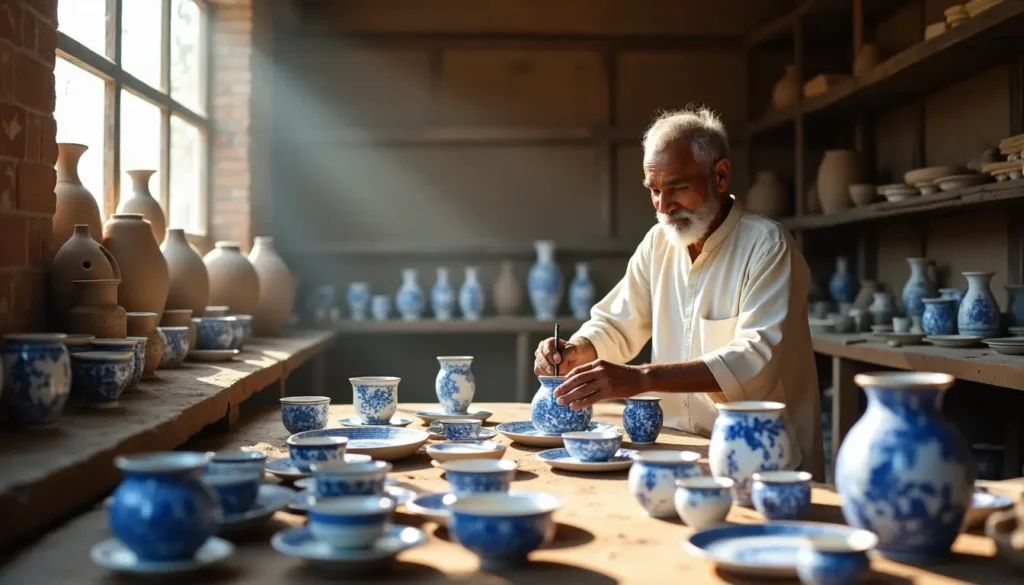The Ceramic City – Khurja
Khurja, often proudly known as the “Ceramic City of India,” is a renowned town in the Bulandshahr district of Uttar Pradesh. This title has been earned because Khurja is one of the largest centers of ceramic and pottery production in the country, with a history that goes back nearly 600 years. The art of pottery here is believed to have been introduced by Persian craftsmen who settled in the region during the Mughal period. Over time, the people of Khurja preserved and developed this traditional craft, passing it down through generations, until it became a thriving industry and the city’s identity.
Today, Khurja is home to more than 500 ceramic factories that produce a vast variety of items, ranging from tableware, crockery, tiles, sanitaryware, decorative pieces, flower vases, wall plates, and kitchenware. The unique charm of Khurja pottery lies in its handcrafted designs, vibrant colors, and glazed finishing techniques, which make each piece stand out. The products are not only sold across India but are also exported to international markets, bringing global recognition to the city.


Leave a Reply